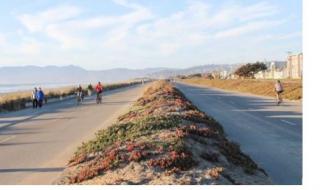Project Roomkey: Gov. Newsom Pledges Another $62M to Prop Up COVID Hotel Program
Publication: San Jose Mercury
Money will help move homeless hotel residents into housing
Gov. Gavin Newsom poured another $62 million into his waning Project Roomkey program Monday, part of an ongoing effort to prevent any of the more than 22,000 homeless Californians sheltering in pandemic hotels from ending up back on the street.
The money, which comes from the state’s Disaster Response Emergency Operations Account, will go to counties that have put up homeless Californians in hotels during the pandemic. The emergency cash injection comes as the pandemic hotels are starting to close in the Bay Area and beyond.
The bulk of the funds — $35 million — will go toward rehousing Project Roomkey residents. That money is for rental subsidies, case management, housing navigation and landlord incentives, and other housing expenses. Another $24 million will help prop up the existing Project Roomkey program, allowing residents to remain in their hotel rooms until they can obtain permanent housing. The last $3 million will go toward technical assistance — helping counties contract with experienced housing providers and create rehousing plans.
...
“While allocating more funding for Project Roomkey helps in the short-term,” said Budget Committee Chair Assemblymember Phil Ting (D-San Francisco), according to the news release. “I look forward to collaborative budget discussions with the administration about reducing homelessness, focusing on smart investments and long-term housing solutions.”
 Assemblymember Phil Ting (D-San Francisco) and State Senator Scott Wiener (D-San Francisco) sent a letter to local transportation officials in strong support of maintaining Great Highway’s closure to vehicles. Since April 8th, it has provided valuable open space for residents to socially distance outdoors during the COVID-19 pandemic, becoming vital to the physical and mental well-being of thousands of San Franciscans.(Photo Courtesy: SFGate.com)
Assemblymember Phil Ting (D-San Francisco) and State Senator Scott Wiener (D-San Francisco) sent a letter to local transportation officials in strong support of maintaining Great Highway’s closure to vehicles. Since April 8th, it has provided valuable open space for residents to socially distance outdoors during the COVID-19 pandemic, becoming vital to the physical and mental well-being of thousands of San Franciscans.(Photo Courtesy: SFGate.com)